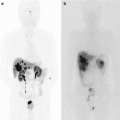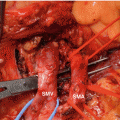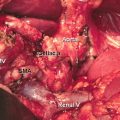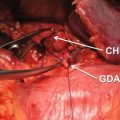Pedrazzoli et al.
Yeo et al.
Farnell et al.
Nimura et al.
Jang et al.
Standard operation
Anterior/posterior pancreatoduodenal
Pyloric
Biliary duct
Superior/inferior pancreatic head and body
Anterior/posterior pancreaticoduodenal
Hepatoduodenal ligament
Right lateral aspect of the SMA and SMV
Gastric lesser/greater curvature
Pyloric
Right of the hepatoduodenal ligament
Anterior/posterior pancreatoduodenal
Right of the SMA
Anterior to the CHA
Anterior/posterior pancreatoduodenal
Anterior/posterior pancreatoduodenal
Bile duct and cystic duct
Extended operation
Hepatic hilum
Along the aorta from the diaphragmatic hiatus to the IMA
Laterally to both renal hilus
Gastric lesser/greater curvature
Superior/inferior pyloric
Celiac origin
Celiac to left renal vein
Left renal vein to IMA
Between bilateral renal hilum
Hepatoduodenal ligament skeletonization up to the liver
Hepatic artery and celiac axis
Paraaortic from celiac axis to IPM
Circumferential dissection of the SMA
Common hepatic artery
Celiac artery
Hepatoduodenal ligament skeletonization
SMA
Paraaortic from the origin of celiac axis to IMA
Common hepatic artery
Celiac axis
Hepatoduodenal ligament skeletonization
SMA
Paraaortic between celiac axis and IMA
Nerve plexus dissection in extended operation
Circumferentially around the CHA and SMA, semicircumferentially on the right lateral aspect of the celiac axis
Right side of the celiac axis and SMA semicircumferentially
In two RCTs, dissection around the SMA was considered as nerve plexus dissection. Diarrhea rates were reported between 42–84% after circumferential dissection and 15% after semicircumferential dissection of the SMA nerve plexus. However, R0 resection rate and overall survival was not affected by the extent of SMA nerve plexus dissection. Therefore, circumferential dissection of the SMA is not oncologically necessary, but only worsens the QOL after pancreatoduodenectomy.
Operative outcomes according to surgical extents are summarized in Table 21.2. Mean operative time was significantly longer in extended pancreatoduodenectomy (EPD) in four studies. Blood transfusion rate was higher in extended surgery compared to standard pancreatoduodenectomy (SPD) in one trial. R0 resection rates were similar in the SPD (72.5–94.1%) and EPD (78.0–93.0%) groups. In all five studies, the number of retrieved lymph nodes was significantly higher in the EPD than in the SPD group. However, lymph node metastasis rates in all five studies were similar in patients who underwent EPD (43.2–68.0%) and SPD (45.9–68.7%) [8, 19–23].
Table 21.2
Operative outcome of five RCTs according to type of surgery
Pedrazzoli et al. | Yeo et al. | Farnell et al. | Nimura et al. | Jang et al. | |||||||
|---|---|---|---|---|---|---|---|---|---|---|---|
SPD | EPD | SPD | EPD | SPD | EPD | SPD | EPD | SPD | EPD | ||
N | 40 | 41 | 146 | 148 | 40 | 39 | 51 | 50 | 83 | 86 | |
Operative time (min) | Mean ± SEM | 371.9 ± 49.8 | 396.7 ± 49.9 | 354 | 384 | 378 | 450 | 426 | 547 | 355.5 ± 12.4 | 419.6 ± 13.0 |
Blood transfusion (U) | Mean ± SD | 1.95 ± 0.2 | 2.07 ± 0.2 | 0.5 ± 0.1 | 0.5 ± 0.1 | 22% | 44% | 2.1 | 2.4 | 0.1 ± 0.05 | 0.25 ± 0.09 |
PD/PPPD/SSPPD | N | 20/20/0 | 18/23/0 | 21/125/0 | 148/0/0 | 40/0/0 | 39/0/0 | 13/19/19 | 11/23/16 | 21/62/0 | 26/60/0 |
Portal vein resection | N(%) | – | – | 4(3%) | 4(3%) | (23%) | (21%) | 24(47%) | 24(48%) | 17(20.5%) | 23(26.7%) |
No. of lymph nodes retrieved | Mean | 13.3 | 19.8 | 17.0 | 28.5 | 15 | 34 | 13.3 | 40.1 | 17.3 | 33.7 |
LN(+)(%) | N(%) | 24(60.0%) | 24(58.5%) | 67(45.9%) | 64(43.2%) | (55%) | (68%) | 32(63%) | 30(60%) | 57(68.7%) | 57(66.3%) |
R0 resection (%) | N(%) | 29(72.5%) | 32(78.0%) | 128(88%) | 138(93%) | (76%) | (82%) | 48(94.1%) | 45(90%) | 71(85.5%) | 78(90.7%) |
Postoperative hospital stay (days) | Mean ± SD | 22.7 ± 1.4a | 19.3 ± 1.1a | 11.3 ± 0.5a | 14.3 ± 0.8a | 13 | 16 | 43.8 | 42.4 | 19.7 ± 9.4 | 22.8 ± 17.1 |
Meta-analysis of the five RCTs showed that delayed gastric emptying and pancreatic fistula rates tend to be higher in patients who underwent EPD. However, meta-analysis of each morbidity using a random effects model revealed no significant differences. The rate of postoperative diarrhea (17.3% vs. 6.7%, p = 0.08) and overall postoperative morbidity (38.8% vs. 30.3%, p = 0.160) tended to be higher in patients who underwent EPD (Fig. 21.1). The odds ratio for mortality in the EPD group was 1.02 (95% CI, 0.38–2.69), but the difference was not statistically significant.









